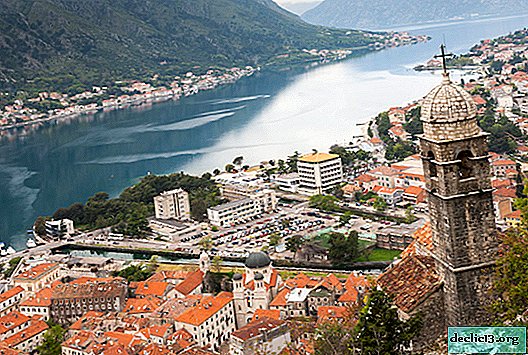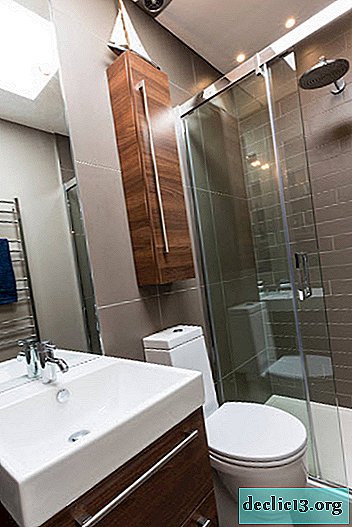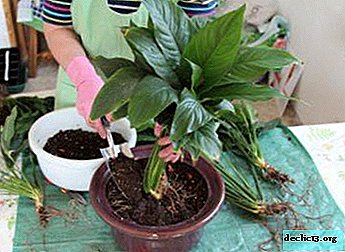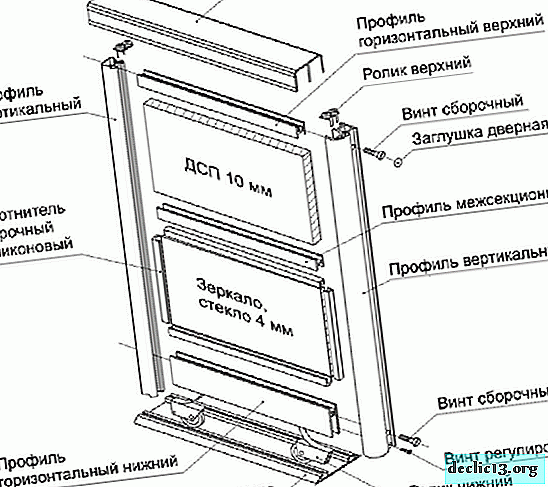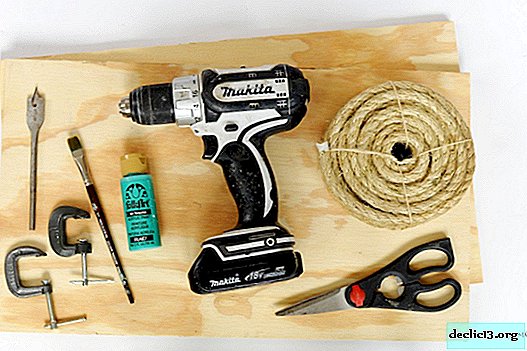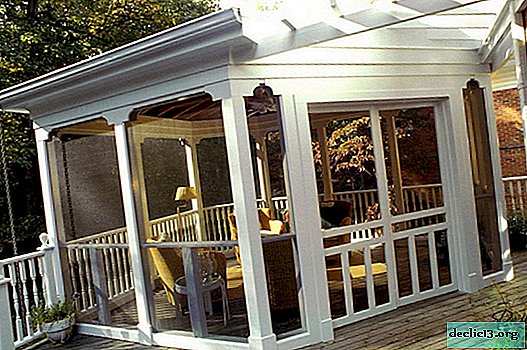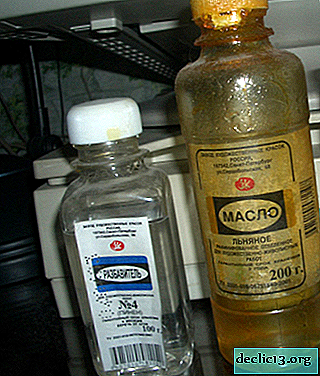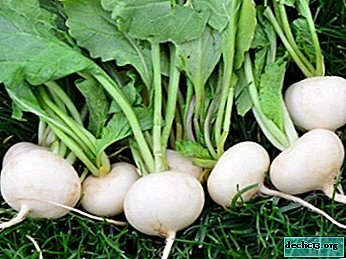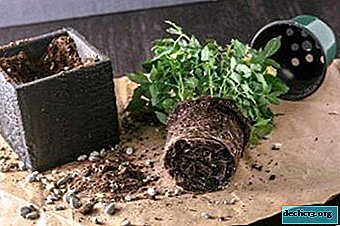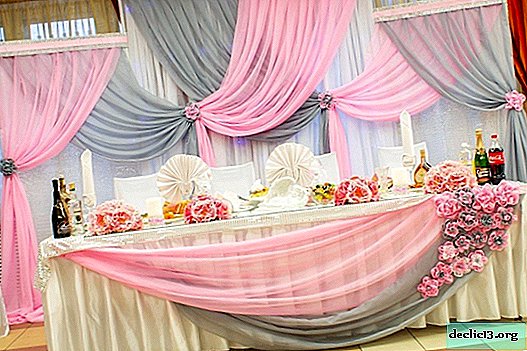Want a beautiful garden in any weather? Plant the Hague Rhododendron
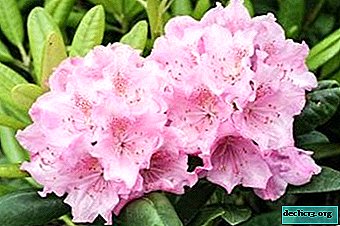
There are a lot of varieties of rhododendron. All of them are beautiful, but have a big drawback - they are unstable to severe Russian winters.
The Hague Rhododendron is a particularly frost-resistant flower that can survive in open ground at sub-zero temperatures.
The results of Finnish selection varieties exceed all expectations - the lush generous flowering of the Hague rhododendron attracts many amateur growers.
Brief definition of Haaga species
The Hague Rhododendron - A hybrid variety of evergreen rhododendrons from the Finnish selection of a large heather family. The East is considered the homeland - Korea, Japan, the Himalayas, are found in the Caucasus in the mountainous regions of Germany.
Detailed description
Evergreen shrub, branched, spherical crown. The bush is dense, compact in shape. It blooms from mid-June, flowering is short - 2 to 3 weeks. It blooms both on the sunny side and in partial shade. The leaves are dense, glossy, dark green, 13 - 15 cm in length. The kidneys are red. The flowers are saturated - pink, wavy at the edges, up to 5 - 6 cm in length, the petals are decorated with red - orange dots. Inflorescences are dense, up to 15 - 18 flowers in each. The variety is very hardy.
History of occurrence
The Hague hybrid rhododendron is considered a short-fruited variety from the Katevbinsky rhododendron. It was bred in Finland in 1974 as part of the rhododendron breeding program at the University of Helsinki. About 80 main varieties of this species are registered.
What is the difference from the other varieties?
The main distinguishing feature of the rhododendrons from the Finnish series is its excellent resistance to frost. This makes it possible to plant tropical flowers in the northern regions.
Photo varieties
Geisha Ash
Slow-growing shrub. In adulthood, grows up to a meter in height. The leaves are dark green, wintering, in the fall they become burgundy red. It blooms in May or early June, blooms generously. Frost resistance is average, shelter for the winter is required. The flowers are small, up to 3 cm, red with a purple hue, funnel-shaped.

Salmon
Japanese deciduous shrub, grows up to 1.5 - 2 m (we wrote about deciduous rhododendrons here). The flowers are pink with an orange tint, decorated with a huge orange stain. It blooms in May, has a pronounced aroma. In one inflorescence, up to 10 - 12 large flowers are collected. The most common type.

Pink
Variety - perennial, evergreen shrub, grows up for a long time. It grows to 2 - 2.5 m in height. It blooms luxuriantly, plentifully, the average flowering time is up to 1, 5 months. It features an exquisite aroma, flower shape and delicate tones of pink color - from a colorful shade to pale pink, pastel. The leaves are small, grow up to 2.5 - 3 cm. In their structure, they are smooth, glossy, dense, oblong, lanceolate. They have a deep, dark green color. Subsort: Pink lights, Mikrantum, Elegant, etc.

Red
Short-fruited hybrid variety of the Finnish series is very frost-resistant. The bush is erect, low, up to 1 m in height. Branched. The flowers are bright red, bell-shaped. Buds and buds also have a red tint. The leaves are medium in size, up to 6 cm long, dense, glossy, dark green. Subsort: Maurits FinE, Hellicky FinE and others. We talked about Helliki's rhododendron in this article.

Bloom
Dates and features
Rhododendron The Hague blooms in May - June., duration - about 3 weeks. It blooms profusely, forming a rounded or pyramidal dense crown. It blooms even at a young age.
Care before and after
After flowering, wilted flowers and inflorescences must be removed. During budding and bud formation, the temperature should be up to 10 - 15 ° C. During flowering, the temperature can be increased by 5 degrees, preferably good lighting and plentiful watering during this period.
What if the buds do not appear?
It is necessary to check whether the flower is sick, damage by garden pests is possible, they inhibit the development and flowering of the Hague rhododendron. Perhaps the flowers lack moisture. It is necessary to adjust watering.
IMPORTANT! In summer, daily spraying of leaves or a cold shower is required.If the soil lacks minerals, it is possible to feed with fertilizers specifically for this type of rhododendron.
Use in landscape design
Rhododendron of The Hague is well adjacent to juniper bushes, thuja, pine trees. Looks harmoniously next to the varieties of rhododendron, which have an orange color of flowers. Look spectacular on a green lawn.
Step-by-step care instructions
Landing place
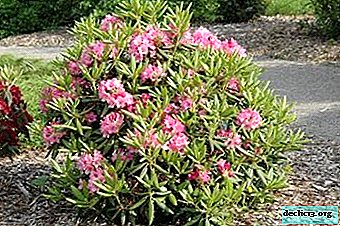 Rhododendron feels good both in the sun and in partial shade. But when planting in open places, the flower needs protective shaded shelters from the bright sun and wind.
Rhododendron feels good both in the sun and in partial shade. But when planting in open places, the flower needs protective shaded shelters from the bright sun and wind.
The Hague Rhododendron grows well near water bodies - moist air is preferred for its cultivation.
Despite its frost resistance, drafts and windy places should be avoided when planting in the garden.
The soil
The soil for the Hague rhododendron should be loose, acidic. Soil composition:
- Drainage base.
- Sod land - 1 h.
- Heather land - 2 hours
- Peat - 3 hours
- Coarse sand - 1 hour.
Rooting
Rhododendron The Hague is planted in spring or autumn. You can not do planting during flowering and 10 -14 days after it.
The Hague Rhododendron Landing:
- Dig a hole with a depth of 40 - 45 cm and a width of 55 cm.
- It is important to place a drainage layer 10-15 cm thick at the bottom of the hole.
- Pour pre-prepared soil mixture into the hole, slightly tamping it.
- They make a depression, put a seedling there.
- Fall asleep with a substrate at the level of the root neck.
- Abundant watering is required.
- It is desirable to mulch the soil with a thickness of 5 - 6 cm.
The composition of the mulch:
- Moss.
- Rotted needles.
- Peat.
- Pieces of oak bark.
- Oak leaves.
Temperature
The Hague rhododendron is a particularly hardy variety, can withstand temperatures down to -35 ° C. It is necessary to maintain a constant high humidity, then the flower will easily tolerate a sultry and arid summer. The optimum temperature for rhododendron is 12 - 15 ° C /
Watering
Rhododendron The Hague requires plentiful watering and daily spraying in the summer. In winter and autumn, watering is reduced, watering should only be on dry days. It is recommended to water it with rain or settled cool water. You can water it with a weak solution of sphagnum peat - after soaking it in a small amount for a day.
Top dressing
Top dressing begins immediately after planting. Fertilize the soil throughout the flowering period. To acidify the soil, superphosphate, calcium, ammonium are added to the water. In early spring, fertilizers should contain nitrogen - per 10 l of water - 4 - 5 g of magnesium sulfate. In mid-summer, the concentration of fertilizers is reduced by 2 times.
Pruning
In order to rejuvenate the adult hague rhododendron, in the spring, tops are trimmed in well-developed shoots. Places of cuts are processed by garden var.
After 30 days, young shoots will begin to grow intensively, sleeping buds will begin to break through. Old and damaged branches are also cut into a third.
Transshipment
The Hague rhododendron transplant is carried out in the spring, it can be transplanted before and after flowering. The flower is hardy enough to transplant, quickly gets used to new conditions. Transplant substrate:
- sour peat - 2 hours.
- sawdust - 1h.
- sand - 1 hour
- sulfur - 40g.
How to propagate?
 The method of reproduction of the Hague rhododendron - cuttings:
The method of reproduction of the Hague rhododendron - cuttings:
- Semi-woody shoots are cut to a length of 7 - 8 cm.
- Put in peat soil for rooting.
- Cover with a film or glass.
- Rooting occurs within 2 to 3 months.
- Transplanted into special boxes with a special mixture of peat and needles.
- The temperature of the content is 10 - 12ºС.
- Planted in the open ground in spring, along with boxes.
- Only after 2 - 3 years is transplanted into the open ground.
Diseases and Pests
- Most often, snails and slugs are noticed on the leaves and branches of the Hague rhododendron. They need to be assembled manually.
- Spider mites, scutes, rhododendron bugs and flies will help to get rid of spraying with fungicides 8% - kalbofos, etc.
- To get rid of weevil, you need a solution of diazonin. It is necessary to process the branches, leaves, substrate around the bush.
Problem prevention
- With improper care, a fungus may appear - rust, chlorosis, leaf pigmentation. It is necessary to adjust watering.
- If the leaves turn yellow, you need to fertilize the flower with iron chelate.
- Rotted shoots must be cut immediately.
- To prevent diseases, the bushes of the Hague rhododendron in the early spring and late autumn are best treated with a solution of Bordeaux fluid.
The Hague Rhododendron is a very hardy variety. He needs a little attention and good proper care - and then there are no special difficulties in growing. But a gorgeous flowering garden is provided for connoisseurs of bright exotic flowers.


